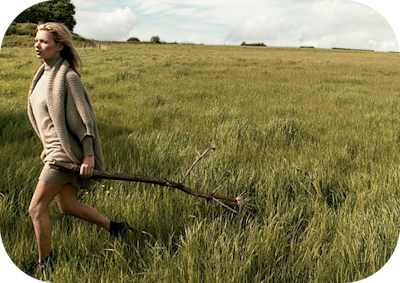While a lot of people are aware of the benefits of organic food, not everyone considers the impact that using more organic clothing could have on the environment and the health of the people wearing it. There are a number of different eco friendly textiles out there, and since clothes production is one of the largest industries, making sure that more clothes are made in the accordance with environmentally friendly principles and practices could make a huge impact on the world we live in.
Organic Fibers

Even though organic clothing is not as strictly regulated as organic food, there are certain standards that have to be met in order for a piece of clothing to earn this prestigious label. For one, materials used in the production of organic clothing have to be of natural origin, and have to be grown without the application of different chemical fertilizers or pesticides. Additionally, processes involved in the production of such clothing can’t rely on chemicals, which includes using artificial dyes. This means that clothes made in this fashion are biodegradable and that their manufacture doesn’t contribute to pollution.
Bamboo

Even though bamboo clothes are often labeled organic, there is a special caveat associated with this type of clothing. Bamboo itself can be successfully grown without the use of pesticides of fertilizers, and provides for a very decent yield even if you don’t replant it after harvesting, so when it comes to the material itself, it is completely organic. However, in order to convert bamboo cellulose into usable fiber, chemical processes have to be involved, and they are what makes the label ‘organic’ somewhat questionable. However, if these processes are conducted in an environmentally conscious manner, with care when it comes to the disposal of the chemicals used, bamboo clothing can be called eco friendly. Bamboo clothing offers great insulation, it is wrinkle resistant, and very absorbent.
Organic Cotton
Production of the cotton that we are used to seeing in clothes requires staggering quantities of chemical insecticides, pesticides and fertilizers. These chemicals often and up in water and can be harmful for the livestock and environment in general. Organic cotton, on the other hand, is grown without the aid of any chemicals, with the use of seeds that haven’t been genetically modified. While this means significantly lower yield, this fabric is much more environmentally friendly, as long as no chemicals are added during the processing of the fabric. Most commonly this involves chemicals dyes, but since cotton naturally comes in a variety of colors, including orange, red and white, avoiding the use of coloring agents isn’t that much of a problem.
Hemp

Hemp is one of the most commonly used fabrics for eco friendly clothes, due to a number of its properties. Hemp clothing is extremely durable, offers moderate protection from UV rays, and is quite resistant to dirt, meaning that these cloths are easier to wash without the addition of chemicals. Hemp also comes naturally in different colors, including green, black, grey and brown.
Apart from being a perfect material for clothes, hemp also directly helps the environment. Due to its fast growth, it absorbs carbon from the atmosphere much more than other plants used for textile production, and it doesn’t require large quantities of water to grow.
Sources:
http://www.ota.com/organic/mt/organic_cotton.html
http://braintreeclothing.com.au/
http://en.wikipedia.org/wiki/Bamboo_textiles
http://www.organic.org/articles/showarticle/article-224
